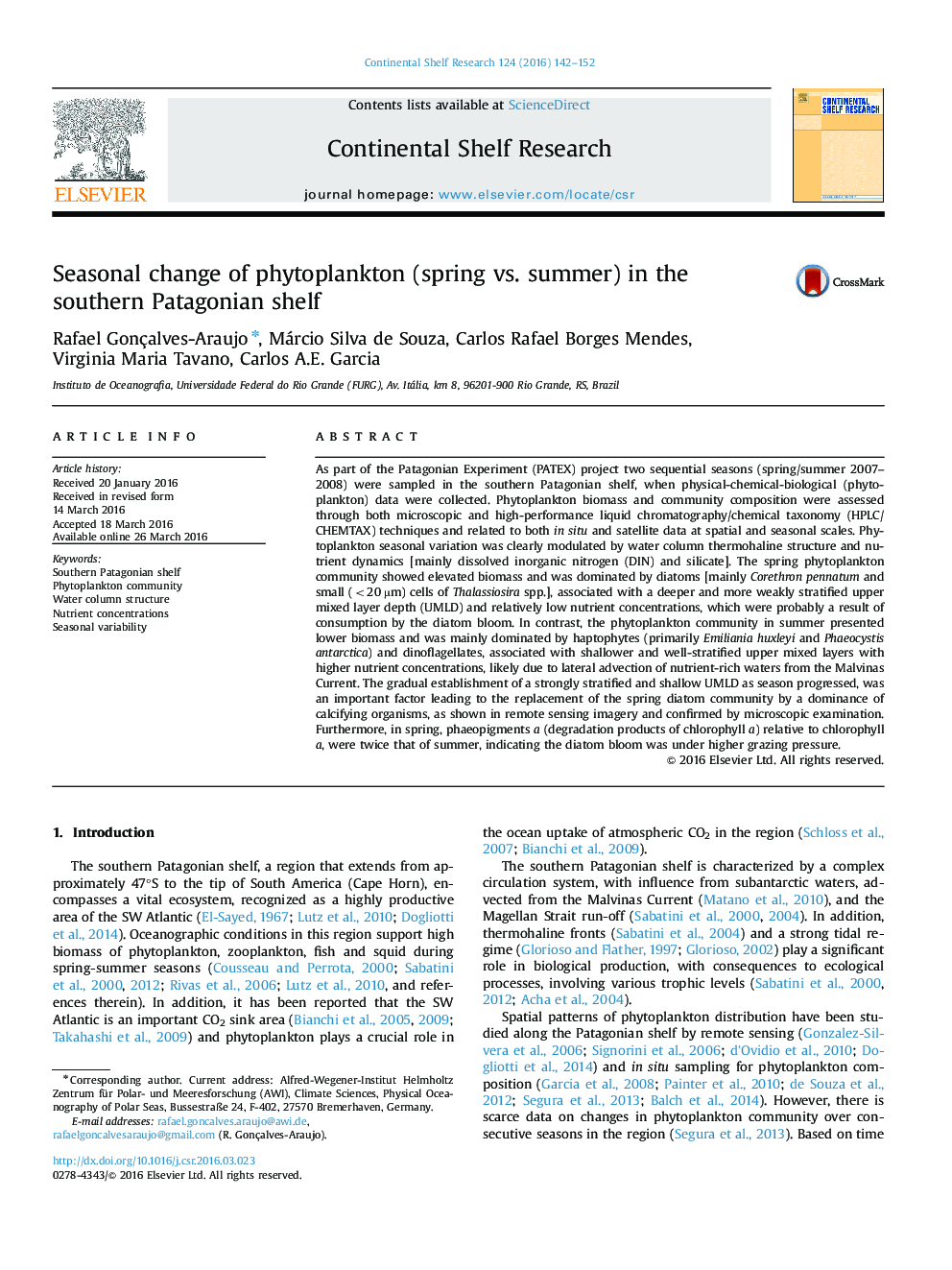| Article ID | Journal | Published Year | Pages | File Type |
|---|---|---|---|---|
| 6382907 | Continental Shelf Research | 2016 | 11 Pages |
â¢Seasonal phytoplankton variability in the southern Patagonian shelf was assessed.â¢Higher phytoplankton biomass was observed during spring.â¢Spring diatoms were replaced by haptophytes and dinoflagellates in summer.â¢Phytoplankton variability driven by changes in water column structure and nutrient.
As part of the Patagonian Experiment (PATEX) project two sequential seasons (spring/summer 2007-2008) were sampled in the southern Patagonian shelf, when physical-chemical-biological (phytoplankton) data were collected. Phytoplankton biomass and community composition were assessed through both microscopic and high-performance liquid chromatography/chemical taxonomy (HPLC/CHEMTAX) techniques and related to both in situ and satellite data at spatial and seasonal scales. Phytoplankton seasonal variation was clearly modulated by water column thermohaline structure and nutrient dynamics [mainly dissolved inorganic nitrogen (DIN) and silicate]. The spring phytoplankton community showed elevated biomass and was dominated by diatoms [mainly Corethron pennatum and small (<20 µm) cells of Thalassiosira spp.], associated with a deeper and more weakly stratified upper mixed layer depth (UMLD) and relatively low nutrient concentrations, which were probably a result of consumption by the diatom bloom. In contrast, the phytoplankton community in summer presented lower biomass and was mainly dominated by haptophytes (primarily Emiliania huxleyi and Phaeocystis antarctica) and dinoflagellates, associated with shallower and well-stratified upper mixed layers with higher nutrient concentrations, likely due to lateral advection of nutrient-rich waters from the Malvinas Current. The gradual establishment of a strongly stratified and shallow UMLD as season progressed, was an important factor leading to the replacement of the spring diatom community by a dominance of calcifying organisms, as shown in remote sensing imagery and confirmed by microscopic examination. Furthermore, in spring, phaeopigments a (degradation products of chlorophyll a) relative to chlorophyll a, were twice that of summer, indicating the diatom bloom was under higher grazing pressure.
